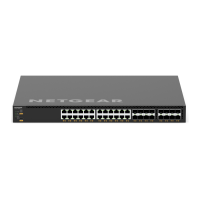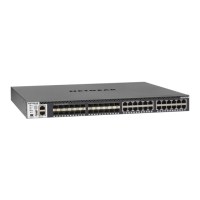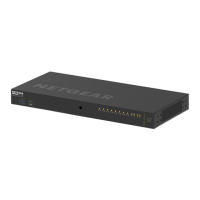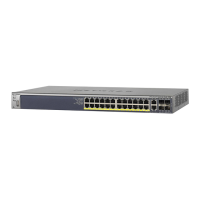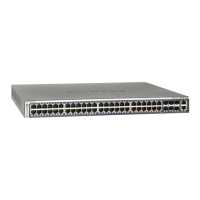OSPF and OSPFv3
373
M4300 Series and M4300-96X Fully Managed Switches User Manual
12. From the Authentication Type menu, select one of the following authentication types:
• None. This is the initial interface state.
• Simple
. If you select Simple, you are prompted to enter an authentication key.
This
key is included, in the clear, in the OSPF header of all packets sent on the network.
All routers on the network must be configured with the same key.
• Encrypt. If you select Encrypt you are prompted to enter both an authentication key
and an authentication ID. Encryption uses the MD5 Message-Digest algorithm.
All
routers on the network must be configured with the same key and ID.
13. In the Authentication Key
field, enter the OSPF authentication key for the specified
interface.
If you do not select authentication, you are not prompted to enter a key.
• If you select Simple authentication, you cannot use a key of more than 8 octets.
• If you select Encrypt, the key can be up to 16 octets long.
The key value is displayed only if you are logged on with read/write privileges; otherwise,
it is displayed as asterisks.
14. In the Authentication ID field, enter the ID to be used for authentication.
You are prompted to enter an ID only when you select Encrypt as the authentication
type.
The ID is a number between 0 and 255, inclusive.
15. Click the Add
button
The new virtual link is added.
16. Click the Apply button.
Your settings are saved.
The following table describes the nonconfigurable information that is displayed.
Table 136. OSPF Virtual Link Configuration
Field Description
Neighbor State The OSPF interface state can be one of these values:
• Down.
This is the initial interface state. The lower-level protocols
indicated that the interface is unusable. Interface parameters are set to
their initial values.
All interface timers are disabled, and there are no
adjacencies associated with the interface.
• Waiting.
The router is trying to determine the identity of the backup
designated router by monitoring received hello packets. The router is
not allowed to elect a backup designated router or a designated router
until it transitions out of Waiting state. This prevents unnecessary
changes of backup designated router.
• Point-to-Point. The interface is operational, and is connected either to
the virtual link. On entering this state the router attempts to form an
adjacency with the neighboring router
. hello packets are sent to the
neighbor every hello interval seconds.
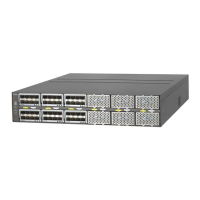
